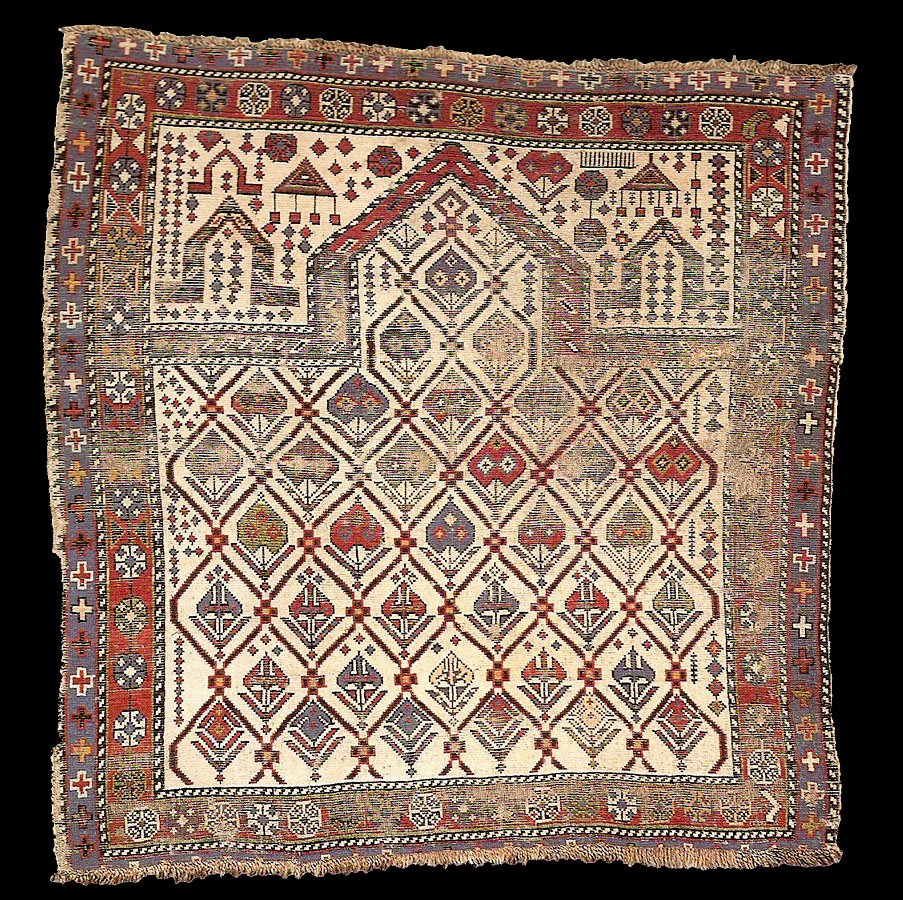|
A Shirvan
prayer rug,
Southern Shirvan Region, Azerbaijan. 114 x 122 cm, 3'9" x 4'0".
Second half 19th century, published Ralph Kaffel's Caucasian Prayer Rugs,
plate 78
|
|
This unusual Shirvan has some interesting and distinctive features. Its
squarish dimensions are uncommon, but the focus here is on the spandrels
which contain jewellery' motifs and three additional prayer arches.
Depictions of jewellery pieces, specifically the triangular pendants (daghdan)
or amulet cases (turmar) evocative of Turkoman craft, are rarely used as
ornamentation in Caucasian weavings, although an instance of similar use in
the spandrels of a Marasali prayer rug is known.
Multiple prayer arches in Caucasian rugs are very rare. Karagashli pieces
feature a vertical arrangement not unlike the stepped progression found in
the Karapinar prayer rugs of central Anatolia, but a horizontal multiple
distribution is extremely unusual. (A horizonal arrangement does appear in
safs, but they are rare in their own right) An apparently unique example,
with three vertical panels each containing adjoining prayer arches, was
published in Oriental Rug Review, while the Strakas once owned a prayer rug
with two adjacent 'head and shoulder' mihrabs. To date, no similar depiction
of a combination of prayer arches and pendant in the spandrels of a
Caucasian prayer rug is known to the author.
 |

